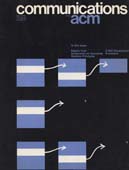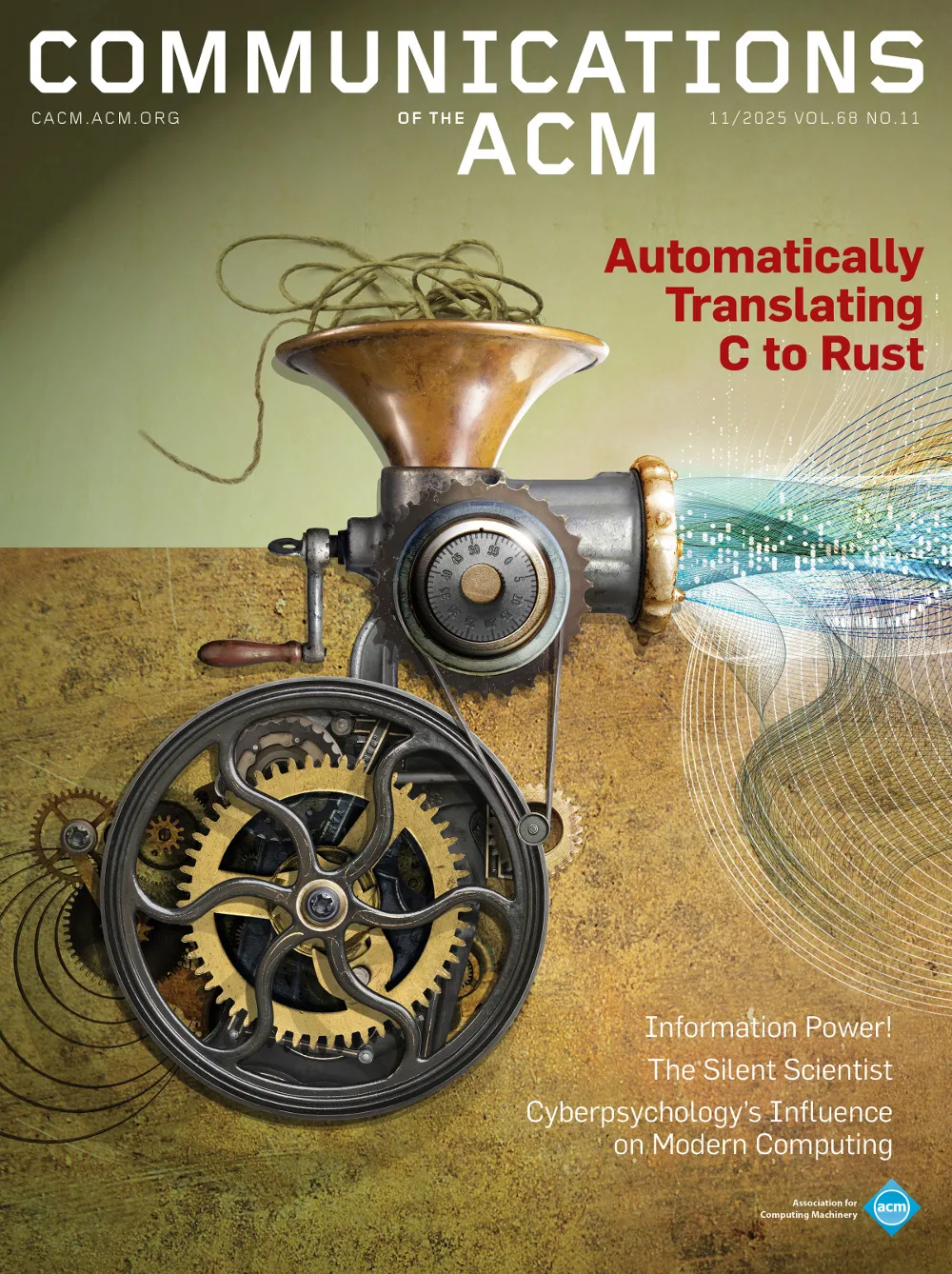May 1976 - Vol. 19 No. 5

Features
A lattice model of secure information flow
This paper investigates mechanisms that guarantee secure information flow in a computer system. These mechanisms are examined within a mathematical framework suitable for formulating the requirements of secure information flow among security classes. The central component of the model is a lattice structure derived from the security classes and justified by the semantics of information flow. The lattice properties permit concise formulations of the security requirements of different existing systems and facilitate the construction of mechanisms that enforce security. The model provides a unifying view of all systems that restrict information flow, enables a classification of them according to security objectives, and suggests some new approaches. It also leads to the construction of automatic program certification mechanisms for verifying the secure flow of information through a program.
Security Kernel validation in practice
A security kernel is a software and hardware mechanism that enforces access controls within a computer system. The correctness of a security kernel on a PDP-11/45 is being proved. This paper describes the technique used to carry out the first step of the proof: validating a formal specification of the program with respect to axioms for a secure system.
Reflections on an operating system design
The main features of a general purpose multiaccess operating system developed for the CDC 6400 at Berkeley are presented, and its good and bad points are discussed as they appear in retrospect. Distinctive features of the design were the use of capabilities for protection, and the organization of the system into a sequence of layers, each building on the facilities provided by earlier ones and protecting itself from the malfunctions of later ones. There were serious problems in maintaining the protection between layers when levels were added to the memory hierarchy; these problems are discussed and a new solution is described.
Modularization and hierarchy in a family of operating systems
This paper describes the design philosophy used in the construction of a family of operating systems. It is shown that the concepts of module and level do not coincide in a hierarchy of functions. Family members can share much software as a result of the implementation of run-time modules at the lowest system level.
Interesting scheduling and sequential properties of monitors can be proved by using state variables which record the monitors' history and by defining extended proof rules for their wait and signal operations. These two techniques are defined, discussed, and applied to examples to prove properties such as freedom from indefinitely repeated overtaking or unnecessary waiting, upper bounds on queue lengths, and historical behavior.
Verifying properties of parallel programs: an axiomatic approach
An axiomatic method for proving a number of properties of parallel programs is presented. Hoare has given a set of axioms for partial correctness, but they are not strong enough in most cases. This paper defines a more powerful deductive system which is in some sense complete for partial correctness. A crucial axiom provides for the use of auxiliary variables, which are added to a parallel program as an aid to proving it correct. The information in a partial correctness proof can be used to prove such properties as mutual exclusion, freedom from deadlock, and program termination. Techniques for verifying these properties are presented and illustrated by application to the dining philosophers problem.
Characteristics of program localities
The term “locality” has been used to denote that subset of a program's segments which are referenced during a particular phase of its execution. A program's behavior can be characterized in terms of its residence in localities of various sizes and lifetimes, and the transitions between these localities. In this paper the concept of a locality is made more explicit through a formal definition of what constitutes a phase of localized reference behavior, and by a corresponding mechanism for the detection of localities in actual reference strings. This definition provides for the existence of a hierarchy of localities at any given time, and the reasonableness of the definition is supported by examples taken from actual programs. Empirical data from a sample of production Algol 60 programs is used to display distributions of locality sizes and lifetimes, and these results are discussed in terms of their implications for the modeling of program behavior and memory management in virtual memory systems.
MIN—an optimal variable-space page replacement algorithm
A criterion for comparing variable space page replacement algorithms is presented. An optimum page replacement algorithm, called VMIN, is described and shown to be optimum with respect to this criterion. The results of simulating VMIN, Denning's working set, and the page partitioning replacement algorithms on five virtual memory programs are presented to demonstrate the improvement possible over the known realizable variable space algorithms.
Analysis of the PFF replacement algorithm via a semi-Markov model
An analytical model is presented to estimate the performance of the Page Fault Frequency (PFF) replacement algorithm. In this model, program behavior is represented by the LRU stack distance model and the PFF replacement algorithm is represented by a semi-Markov model. Using these models, such parameters as the inter-page-fault interval distribution, the probability of the number of distinct pages being referenced during an inter-page-fault interval, etc. are able to be analytically determined. Using these models to evaluate these parameter values permits study of the performance of the replacement algorithm by simulating the page fault events rather than every page reference event. This significantly reduces the required computation time in estimating the performance of the PFF algorithm.



